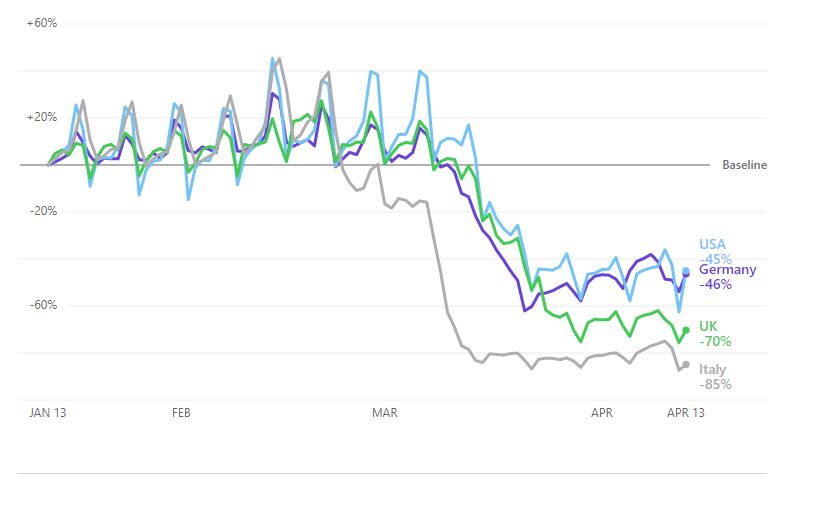272.766.5596

Apple publishes tool to measure stay-at-home levels around the globe
Stay-at-home levels published by Apple provide incredible insights
Apple is collecting data from all iPhone and mobile devices continuously leveraging this to measure stay-at-home levels. Using the location data Apple can tell if a given phone owner is moving, and if so at what speed. And with a little bit, more work can even tell if the phone owner is moving by car or by common transportation.
Therefore Apple published a tool, at this address, that allows anybody to see how well the stay-at-home levels are being followed in various countries, cities, and regions.
Apple is, of course, reassuring its users that this data is anonymized and provided following the best privacy core values possible. Which is always a concern to anyone when submitting personal information!
Results
Here is an example of results for New York City
As expected people tend to drive more and avoid common transportation. Similar results can be seen in Miami, LA, San Francisco, Chicago etc. These stay-at-home levels are unheard of, and thanks to these metrics we can see the clear diminishing levels of people in circulation.

Dallas, Houston, and other large Texas cities seem to be following the stay-at-home orders the least well among all the large US cities we queried.
And an example of 4 different countries: United States, Italy, Germany, and the UK.
In this chart you can see that in Germany for example people have reduced their travelling (by foot, car , common transportation , etc.) by about 46%.
As you can see people seem to be following the stay at home orders better in Italy ( -85%) than in the US (-45%).
What does this mean?
It means that either the local authorities are enforcing the stay at home order better. Or it means that the local population is following instruction to stay at home more.
What will be the impact on the Corona Virus pandemic?
In general , by browsing more cities it appears that people are following the stay at home order quite well in major cities.
It also appears that in countries like France the stay at home order is followed to 90%.
France has already announced that they intend to start raising the stay-at-home orders around May 11th or about 2 months after they were put in place.
A perfectly followed stay at home order at 100% would mean that very few people will have caught Cov19. That is good news. However when the stay-at-home order is lifted, if there are any contagious cases left, it is likely that the cycle of contagion will repeat again.
A badly followed stay-at-home order usually means a completely overwhelmed medical system.
Therefore, perhaps, a stay-at-home ordered that is somewhere in the middle is better in the longer term as it allows a large percentage of the population to get over the Cov19 while not completely overwhelming the healthcare system.
By comparing how the Corona Virus pandemic will evolve in France and Italy vs the US in 3 or 4 months we will have more data to better understand what was the ideal strategy.



